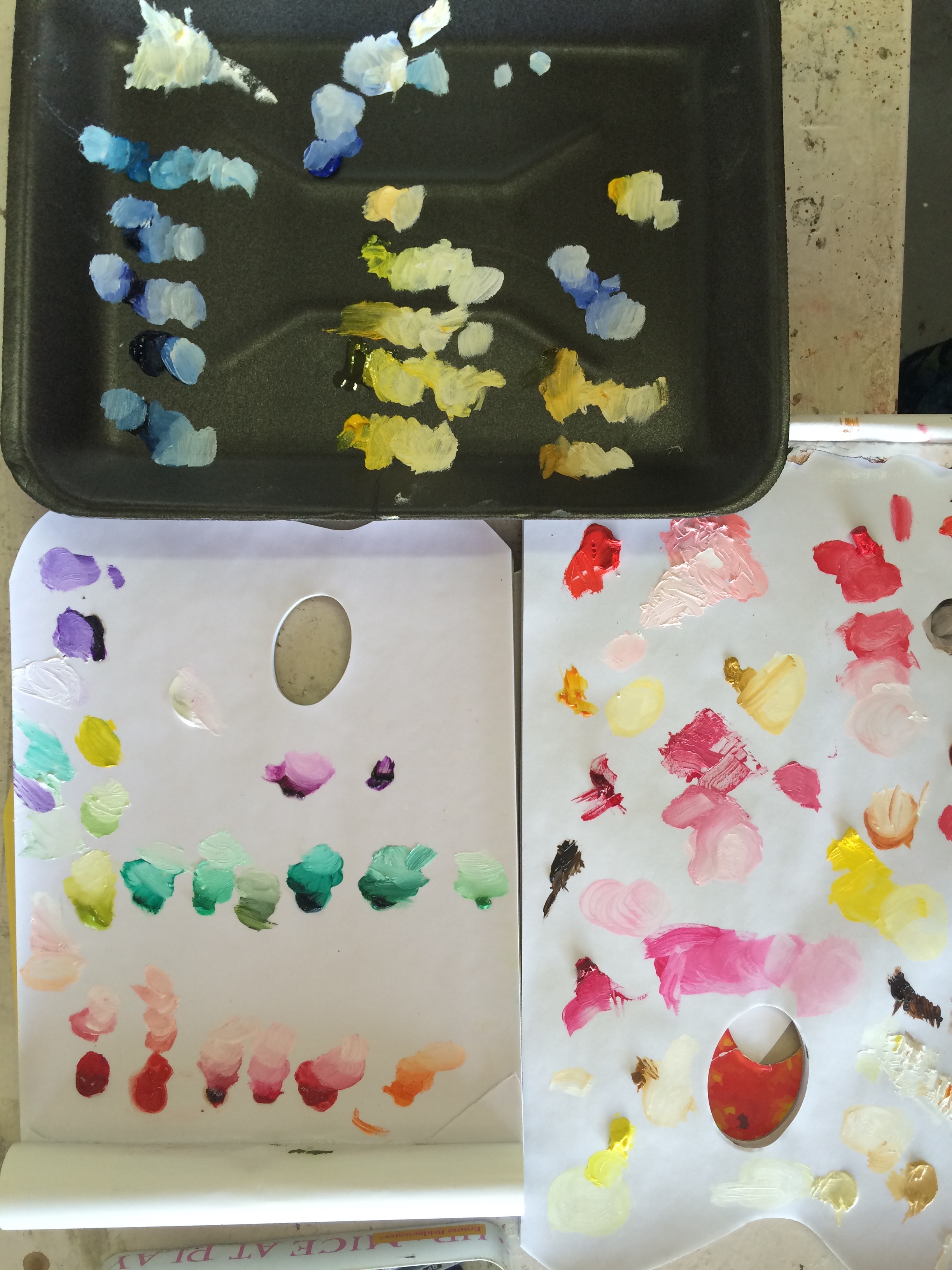“Colours that evolve from a colour system have greater chance of success than random selection. Colour theory is based on an educated guess, but can be proved by experiment or practice, i.e. by that what works. ”
Art tends to be a painful process. As children we can pick up any medium and experiment without any fear, drawing or painting exactly what we want. As we age we start to strive towards realism and hide away from our childish representations. This is often when most children stop making art. However, for the eager artist a world of exercises opens up which enables us to hone our skills. Usually this involves exercises to increase our drawing capabilities such as drawing on the left side of the brain, perspective and so on. Why then do we not pursue exercises in painting? Or if we do, only go as far as painting a very basic colour wheel?
Moving from drawing to painting usually means an explosion of colour for the amateur painter. While this is often exciting, it can also result in a lot of "mud" on your canvas. This post seeks to equip the artist with the skills needed to be able to work well with colour. Although these exercises may seem tedious, they will help you to identify colours properly, and thus know what colours to use, and in the long run also save you money.
Examine each colour you have
These are colour exercises done by some of my students, note how everyone approaches this exercise in their own way. Some working very neatly, and some working freehand. There is no wrong way to do this exercise.
The above exercise is really quite simple. It consists of taking each colour you have, writing down the name and brand of paint, and mixing it with white till you reach the lightest colour you possibly can. Once again this might sound tedious but i can not emphasize enough how important and enriching this exercise is!
Often we just view red as red, or remember that there is a particular shade of red with a slight orange tint, but as soon as you start digging through tubes of paint one can easily become confused. This exercise will not only give you a reference for which shade of red that was, but will also help you buy less paint, and buy paint more efficiently.
Mixing Colours
There are books filled with paint recipes, and often, much like cookery books, they are bought with much excitement and then left on bookshelves, forgotten. For this reason it is important to keep a record of recipes that you find work really well, and to also practice some!
A chart such as the one below shows you the realm of possibilities when mixing just 3 or 4 colours. This is another way of learning how to work with your colours, and also on saving money.
These are just two exercises for painting from a huge variety, however, I find these to be truly helpful. For further reading, these are two books that I would recommend:
If you've found this blog post helpful, join my mailing list and I'll email you updates.







